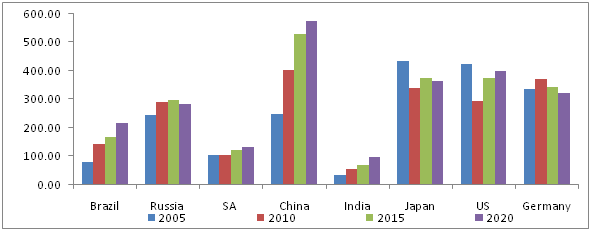Recently, growth in Steel production has been majorly influenced by a favorable base effect, the Government imposing anti-dumping duties on Chinese imports is also an influencing factor
Government expenditure has been a primary driver of steel production in India and the massive resource mobilization of Rs.2.2 lakh crore earmarked in Budget FY2017 for infrastructure development is a case in point here. Even though the sector has been negatively impacted by Chinese dumping of high and low grade steel into Indian markets, recovery of sorts has been achieved through robust growth in road development projects, railway capital expenditure plan and power generation. Recently, growth in Steel production has been majorly influenced by a favorable base effect, the Government imposing anti-dumping duties on Chinese imports is also an influencing factor.
Acuité estimates that the sector will record positive growth in the overall financial year. However, the next two quarters will remain subdued resulting in a slower than expected recovery in China (and therefore highly competitive import substitutes).
Recently, growth in Steel production has been majorly influenced by a favorable base effect, the Government imposing anti-dumping duties on Chinese imports is also an influencing factor
Also, large share of infrastructure in stressed assets pool (and therefore lower credit off take to the sector) is a major constraint. Furthermore, regulatory uncertainties in mining have affected the steel sector adversely. Numerous critical mines have remained closed for varying periods causing immense stress on operations.
Principal factors influencing the category
| Government Expenditure |
| Demand Supply Equilibrium (Import Substitution) |
| Consumer Sentiment/ Inflationary Situation |
| Economic Growth & Outlook |
WTO mandates are yet another reason for the helplessness in dealing with cheap imports. Resultantly, oversupply (correlated to Capacity Utilization levels) is one of the key considerations while assessing the sector. Acuité believes that the sector will continue to contribute around 2% to the country’s GDP over the next two decades.
Sector contribution in Steel consumption
| Sector |
2015-16 |
2020-2021 |
| Construction | 45.82% | 43.62% |
| Automobile | 8.69% | 9.95% |
| Transport equipment | 1.40% | 1.33% |
| Industrial machinery | 21.57% | 23.60% |
| Others | 21.23% | 20.20% |
| Agro instrument | 1.30% | 1.30% |
| Total input | 100.00 | 100.00 |
| Sector's weightage on core IIP index | 17.60% |
| Sector's weightage on overall IIP index | 6.70% |
| Registered entities | 1267 |
| Sector's contribution on GDP | 3.00% |
| Global market share | 6.00% |
| Position in global market | 3rd |

| YR13 | YR14 | YR15 | YR16 | Trend | |
| Debt to equity ratio | 1.95 | 1.83 | 2.35 | 1.91 | ↓ |
| Interest cover | 1.31 | 0.63 | 1.94 | 0.83 | ↔ |
| Raw material cycle (days) | 70.64 | 57.82 | 74.63 | 90.76 | ↑ |
| Debtor days | 54.23 | 54.47 | 51.17 | 56.14 | ↔ |
| Gross working capital cycle | 158.63 | 166.11 | 163.67 | 182.9 | ↑ |
| Creditor days | 90.55 | 84.78 | 85.15 | 97.74 | ↔ |
| Total income / total assets | 1.28 | 1.36 | 1.26 | 1.3 | ↔ |

(Updated as on March 15, 2017)